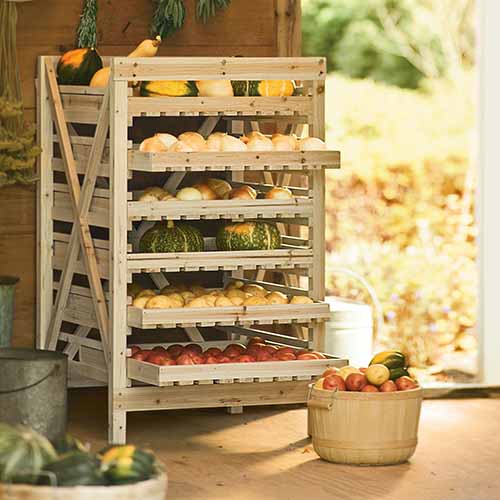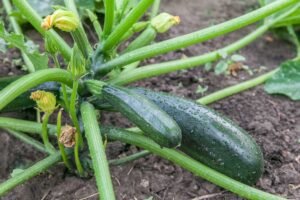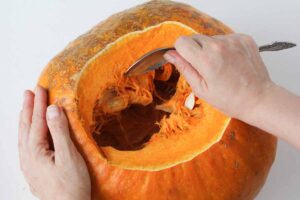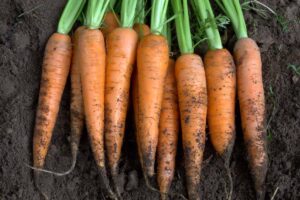Onions are a vegetable garden favorite. They are members of the large and diverse Allium genus that includes garlic and leeks, and are staples in recipes from countries around the globe.
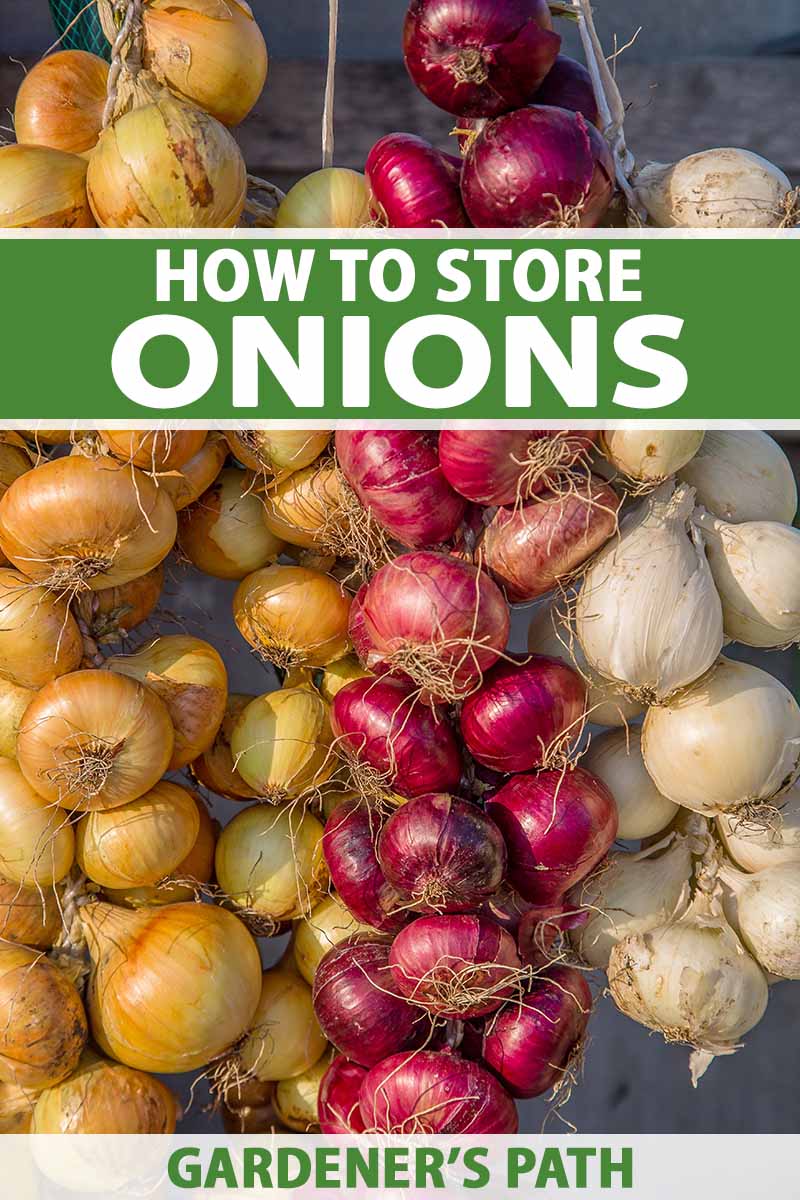
We link to vendors to help you find relevant products. If you buy from one of our links, we may earn a commission.
There are both early- and late-season varieties, making it possible to plant in succession for multiple harvests.
Our guide to growing onions contains all you need to know for cultivation. This article focuses on onion storage.
Here’s what we’ll cover:
What You’ll Learn
Let’s get started. It will be harvest time before we know it!
Onion Primer
In our guide to 15 of the best onion varieties, we break the vegetables down into three categories:
- Bunching
- Fresh
- Storage
Here’s a synopsis of each.
Bunching
Bunching or green varieties have the shortest growing season. Prized for their sweet tops, they are ready in as little as eight weeks for cut-and-come-again harvesting.
When we let them fully mature in 65 to 100 days, depending upon the variety, we can pull them up and enjoy the more pungent soft white base, too.
Examples of bunching types are scallions, spring onions, and their Allium cousins chives and leeks. These typically produce spring and/or summer crops.
Read our guide for more information about growing bunching onions.
Fresh
Fresh types generally take 100 days or more to mature. They have sweet globe, flattened, or torpedo-shaped bulbs. The layers and neck are thick and hold moisture, making for a softer consistency than storage types.
Some you may know are Bermuda, Cipollini, shallot, Spanish, and Vidalia.
These are also spring and/or summer crops.
Storage
And finally, storage varieties may take up to 150 days to mature. Their flavor is the most pungent, and the many thin, crisp layers often bring tears to the eyes during preparation.
Rounded like globes, they have a narrow neck that keeps the bulb drier and better suited to curing for long-term storage.
We harvest storage types in fall and/or winter.
Storing Bunching Onions
The softer the produce, the shorter the shelf-life.
Bunching types are the most perishable. Use snipped tops the day you cut them. Those plucked from the ground, roots and all, last between one and two weeks.
There are two preferred ways to keep them from becoming slimy and spoiled.
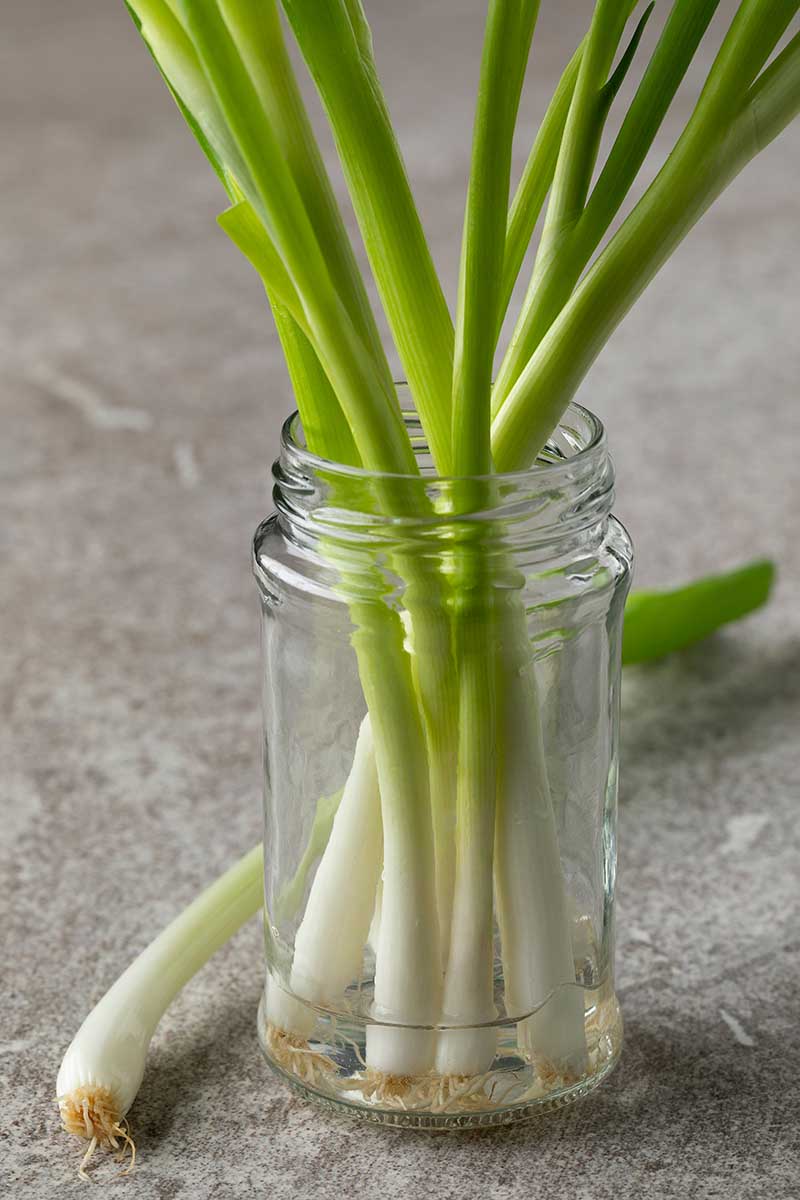
Stand one or more in a glass with about an inch of water. Keep the glass out of direct sunlight on the kitchen counter and change the water daily.
Or, stand a bunch in the center of a damp paper towel. Gather the towel around them and loosely bind it with a rubber band or kitchen twine. Lay the bundle in a low-humidity vegetable crisper bin. Moisten the towel daily.
Fresh and storage types last longer, provided they are “cured.”
Curing Fresh and Storage Varieties
At maturity, when most of the foliage collapses and turns brown, grasp the slender leaves and lift the bulbs from the ground.
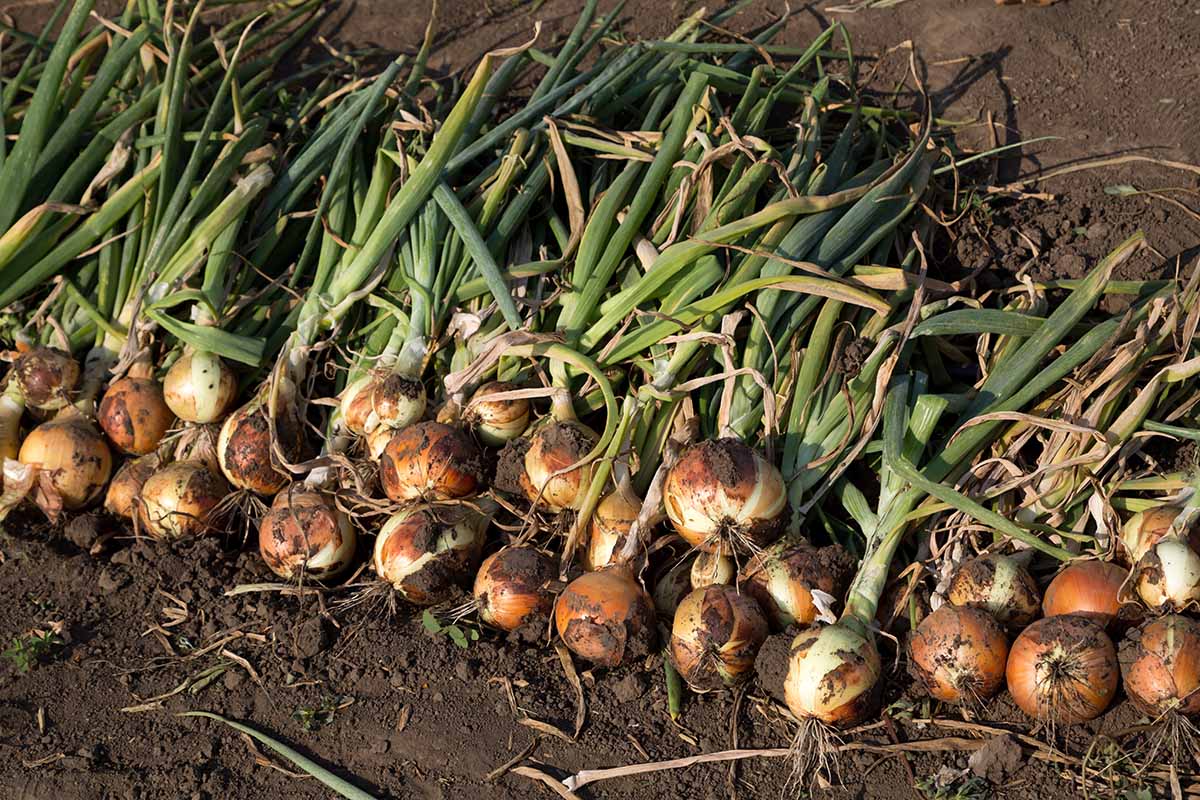
Lay the bulbs in a single layer on a flat surface in a cool, dry, well-ventilated cellar, garage, or another protected area.
Richard Jauron, an extension horticulturist from Iowa State University, recommends leaving them undisturbed for two to three weeks.
Learn more about how to harvest and cure onions in our guide.
Storage Solutions for Cured Onions
How long you can store your crop depends on the variety, curing, and storage conditions.
Some varieties such as ‘Walla Walla’ and ‘Sweet Spanish’ are naturally higher in moisture than others and may only last a few weeks. Good keepers such as ‘Patterson’ and ‘Candy’ can last from six months to a year.
When the necks and outer sheaths are dry and crisp, clip the tops off an inch above the bulbs to pack them loosely.
Or, you can leave the foliage attached and braid it to suspend bunches from hooks or nails, like you might also do with garlic.
Place loose bulbs in containers with air holes. They may rest on top of each other.
Keep the containers in a dark, dry location at 32 to 40°F, with 65 to 70 percent relative humidity.
The National Onion Association (NOA) recommends stacking onion containers no higher than five feet and maintaining one foot between containers and walls to optimize airflow, for large operations and those with big home harvests.
If you can’t achieve the Iowa State-recommended temperature range, you can strive for the 45 to 55°F range the NOA suggests, as it may be more realistic for the home gardener.
Shelf-life varies.
Some soft, fresh kinds last for a few weeks and others – such as shallots – for months.
Firmer storage types last the longest, from several months to a year, depending upon environmental conditions.
Properly cured and with the right container, you’ll get the most out of your crop.
There are numerous ways to save cured bulbs, including crates made of metal, plastic, or wood, and woven bags and baskets.
Here are five to consider:
Canvas Keeper
This double-lined cotton bag from Wayfair breathes to keep produce fresh while blocking out light. Suspend it by the handy loop and open the drawstring to take what you need.
At 12.5 by 5.3 inches, it’s perfect for small-scale stowing out in the shed or in the kitchen for short-term use.
Find the canvas keeper available from Wayfair now.
Jute Baskets
This pair of rugged and flexible woven baskets from VK Living via Amazon hang conveniently from hooks or nails in a cool, dark location, letting in ample air for long-term freshness.
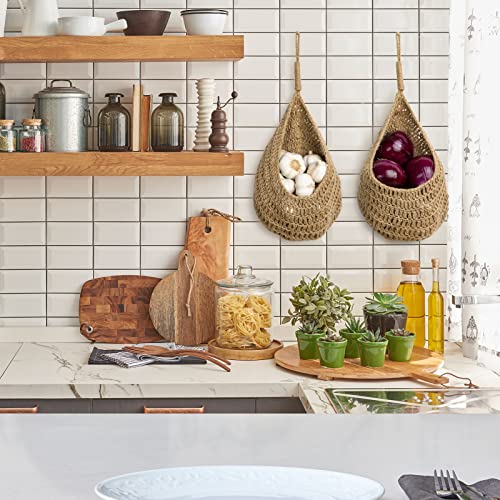
Measuring 11 by eight inches, they are suited to smaller-scale storage that offers easy access.
Find jute baskets available via Amazon now.
Laundry Basket
In addition to products made especially for keeping root vegetables, you probably have an item or two already on hand that may do just fine, like a laundry basket.
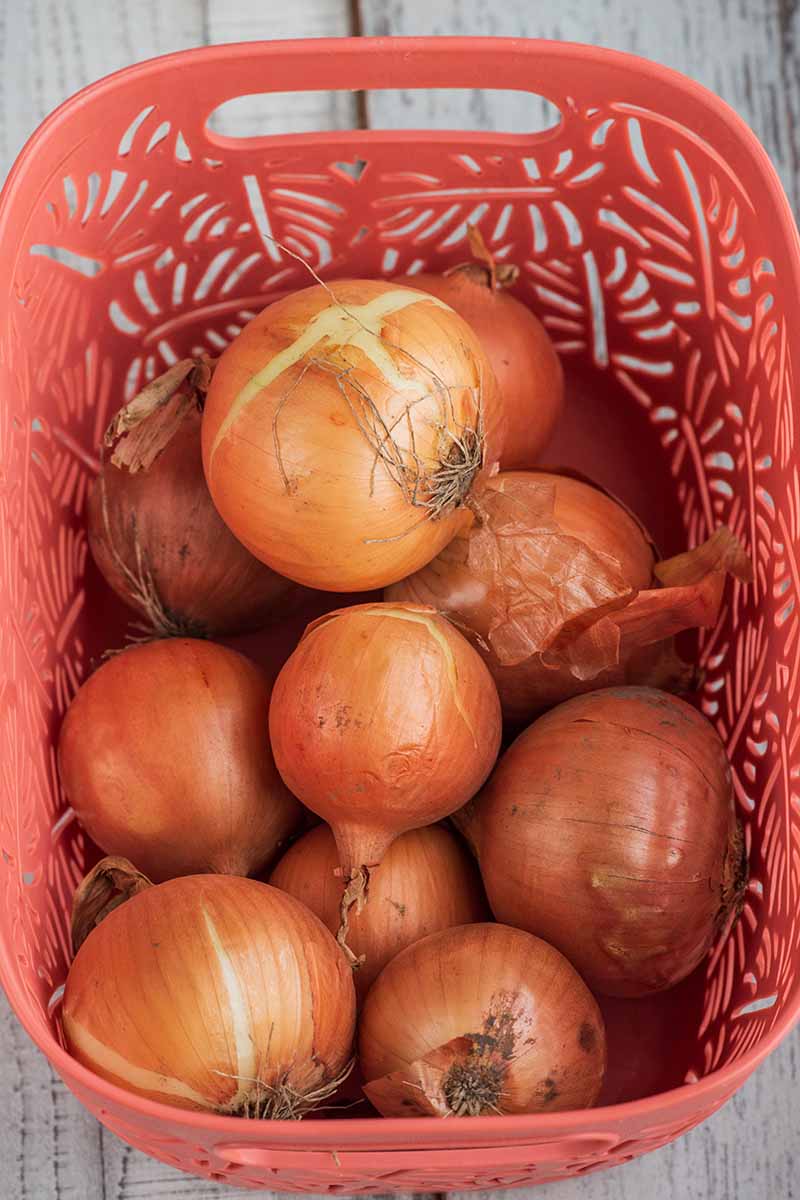
An open top, ventilated side cutouts, and convenient handles make this a functional choice.
Mesh Bags
Mesh bags are another option, you can simply fill them up and lay them flat or hang them as desired.

Each 15-by-25-inch polypropylene sack is red with a black drawstring handle that cinches shut.
Sandbaggy Mesh Bags are available via Amazon in packages of 10 or 50.
Storage Rack
This vegetable storage rack from Gardener’s Supply Company affords the ability to keep a large and varied harvest in well-aerated single layers.
Please note that while the photo shows diverse crops, it’s best to isolate onions. Veggies like squash and potatoes are mostly water and increase the ambient humidity. They are prone to rotting, and may adversely affect neighboring crops.
Constructed of Chinese fir, this six-tier rack has convenient sliding drawers. It measures 39.5 by 23.5 inches.
Find the Vegetable Storage Rack at Gardener’s Supply now.
And finally, please note that under-counter root vegetable drawers may be all the rage, but heat and indoor humidity may render them useless.
Check on stored fresh onions regularly. If the temperature goes above 40°F, or your storage area is too humid, bulbs will start to sprout.
If this happens, remove and use them immediately. Look for signs of decay such as soft spots or mold on or in the neck. Throw away any rotting specimens, or cut away the affected portions and use the rest right away.
Onions for all Seasons
Whether you enjoy bunching, fresh, storage, or all three, storing your allium crop properly goes a long way toward avoiding waste.
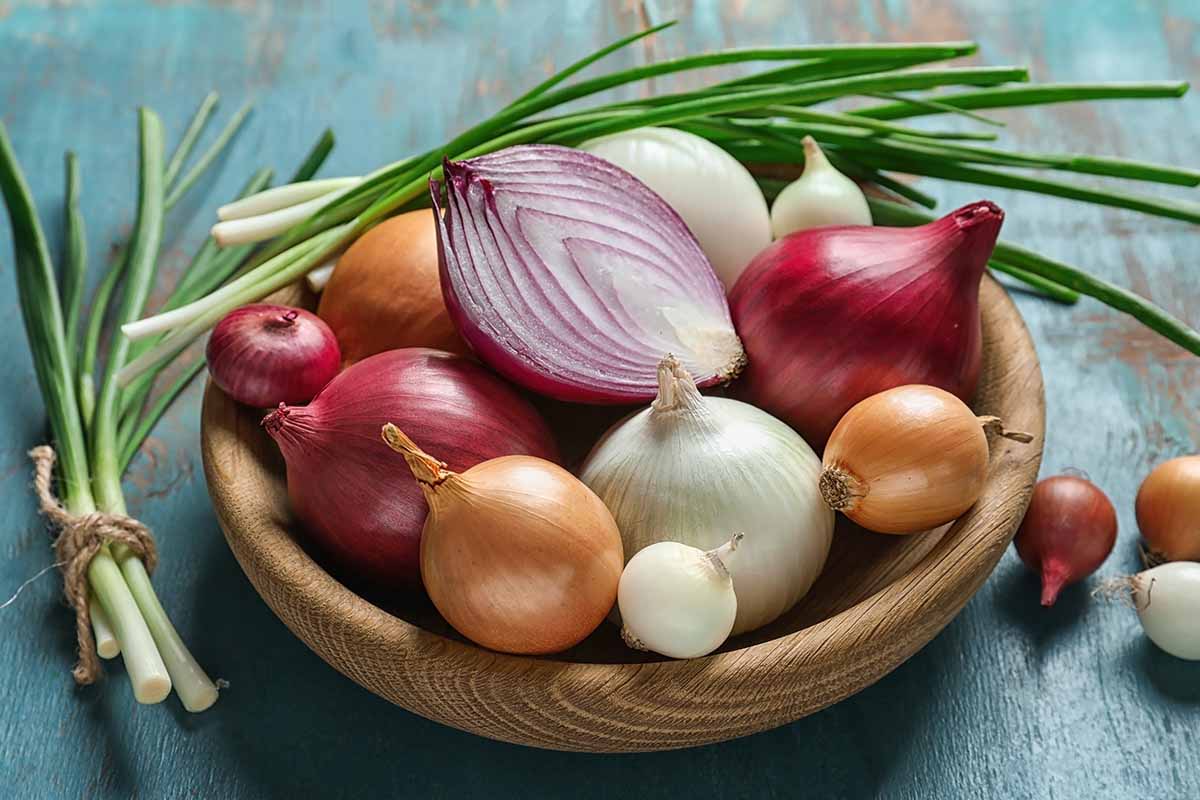
Here are a few final tips:
Discard produce with blemishes, mildew, slippery skin, or soft spots that may harbor bacteria, are prone to rotting, and may damage neighboring vegetables.
Keep onions with their skins on out of the refrigerator to avoid moisture buildup that causes rotting. However, once you cut an onion, put it in the fridge in an airtight container and use it within the week.
If you have a bumper crop this year, consider canning or freezing for future use. Properly canned foods last for years.
Per Kayla Colgrove of the Institute of Agriculture and Natural Resources at the University of Nebraska-Lincoln, frozen raw onions should last for about eight months in the freezer at 0°F.
With succession planting and efficient storage options, you can provide your family and friends with delicious homegrown favorites year-round.
It’s time to get ready for a bountiful harvest!
Do you grow onions? Tell us about them in the comments section below.
If you found this article informative and want to broaden your knowledge about growing onions we suggest reading the following next:

